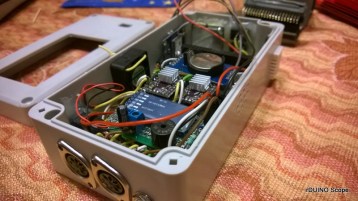The South Florida Science Center recently added a new ten-inch telescope and turned to [Andres Paris] and his brother to replace the hand-cranked dome door system. They turned to an Arduino along with some beefy motor drivers. You can see some videos of the beast in operation, below.
According to a Reddit post, the brothers picked up a 5A 12V motor but decided to overdesign and selected an H-bridge that would handle 20A peak current. An IR remote allows the operator to open and shut the door and reed switches sense the extremes of the door’s motion.
The second video shows the motor and the 3D printed coupling to the existing door gear train. Since the displays on the box are fairly bright, the operator can turn them off using the remote control.
It doesn’t look as thoug any code or diagrams are available, but we are guessing that this type of system would be custom for each individual case anyway. As it turned out, the moving of the existing gear train wasn’t the biggest problem, instead it was supplying the power.
Since the dome rotates, it was not possible to wire the box to power. The system uses some batteries that right now have to be manually charged. However, the brothers plan to take advantage of the fact that the dome is always put back to the same position so they can wirelessly charge the batteries using a Qi transmitter that lines up with the associated receiver when in the home position.
If you would like your own dome, we — along with the Wayback Machine — can help. We truly envy all of the people out there with no deed restrictions.

 and such systems have been available for decades. They are unfortunately quite expensive. So [Dessislav Gouzgounov] took matters into his own hands and developed the
and such systems have been available for decades. They are unfortunately quite expensive. So [Dessislav Gouzgounov] took matters into his own hands and developed the 
